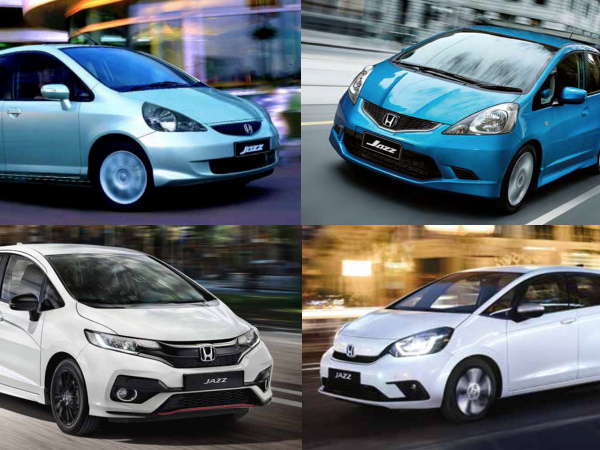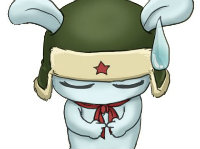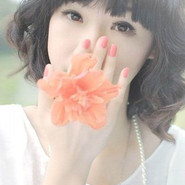Q
Which colour looks better for Honda Jazz?
Deciding on the best color for the Honda Jazz really comes down to personal taste and how you plan to use the car. But if we look at what's popular here in Malaysia, white and silver are definitely the top picks. White gives a crisp, clean look and does a solid job hiding dirt – plus, it reflects sunlight to help keep the cabin cooler, which is a big plus with our hot weather. Silver, on the other hand, has a more modern vibe and doesn't show dust as easily, so it still looks sharp even after some regular use.
For the younger crowd, red and blue are solid choices too. They add a sporty, energetic touch that really complements the Jazz's stylish design. Just a heads-up though – darker colors tend to soak up more heat and scratch marks are more noticeable.
If you're thinking about resale value down the line, neutral shades like white and silver are usually safer bets. They have broader appeal, so you might have an easier time selling it in the used car market.
Oh, and a lot of owners these days are going for vinyl wraps to change the color. It's a flexible option if you want to switch things up later, but make sure you check local traffic laws to stay compliant.
My best advice? Head to a dealership and see the colors in person. Photos can be tricky – the way a color looks under different lighting can change a lot, so nothing beats checking out the actual car before you decide.
Special Disclaimer: This content is published by users and does not represent the views or position of PCauto.
Related Q&A
Q
What Segment is Honda Jazz?
The Honda Jazz is classified as a B-Segment small hatchback in the Malaysian market. This segment is typically characterized by flexible handling, economic practicality, and convenience for urban commuting, making it suitable for Malaysia's narrow streets and high fuel costs. The Jazz has become a popular choice in this segment, especially among young families and urban commuters, thanks to its iconic "Magic Seat" flexible seating design, efficient Earth Dreams engine technology, and spacious interior within a compact body.
In the Malaysian market, competing models in the same segment include the Toyota Yaris and Perodua Myvi. However, the Jazz is well - known for the high resale value and reliability of the Honda brand. It's worth noting that B - Segment vehicles in the Southeast Asian market generally prioritize fuel economy and maintenance costs. The combination of the Jazz's 1.5L i - VTEC engine and CVT transmission can achieve an actual fuel consumption of over 15 km/L, meeting the local consumers' demand for practicality.
In addition, this vehicle line was upgraded to a hybrid version in some global markets in 2021. However, the current models in Malaysia still mainly use traditional fuel power. Whether a new energy version will be introduced in the future depends on Honda's regional strategic adjustments.
Q
What is the Reslae Value of Honda Jazz?
The resale value of the Honda Jazz in the Malaysian used - car market is relatively stable. This is due to its reliable quality, low fuel consumption, and the high local recognition of the Honda brand. Depending on the vehicle's age, mileage, and condition, a 3 - to 5 - year - old Jazz can usually retain 50% - 65% of its original price. The Hybrid models may have a 5% - 8% premium because of their energy - saving features.
The key factors affecting its residual value include regular maintenance records (especially the maintenance of the CVT transmission), the body color (white and silver are more popular), and whether it is still within the original factory warranty period. It is recommended that car owners keep complete maintenance receipts and use original factory parts to maximize the vehicle's value retention.
Among its peers, the used - car price performance of the Jazz is better than some of its competitors. This is related to its flexible space design (such as the ULTRA seat system) and low failure rate. However, the specific transaction price still needs to refer to the real - time data on used - car platforms like Carlist or mytukar.
It's worth noting that the tax - exemption policy for domestic cars introduced in some regions after 2020 has slightly affected the price fluctuations of imported used cars. But as a cost - effective urban vehicle, the demand for the Jazz remains strong in urban areas like the Klang Valley.
Q
How Many CC is Honda Jazz?
The Honda Jazz models available in the Malaysian market are mainly equipped with a 1.5 - liter naturally aspirated engine with a displacement of 1497cc (cubic centimeters). This is a common 'golden displacement' for compact hatchbacks, balancing fuel economy and power performance. This engine uses Honda's i - VTEC technology, capable of outputting approximately 120 horsepower and 145 Nm of torque. It is paired with a CVT transmission or a 6 - speed manual transmission (depending on the version), which is suitable for urban commuting and flexible driving.
It's worth noting that while the displacement (CC) affects power output, the actual driving experience also depends on engine tuning, vehicle weight, and the matching of the transmission system. For example, Honda has optimized the combustion efficiency of the Jazz through Earth Dreams technology, making the torque more abundant at low speeds. Malaysian customers can also pay attention to the minor changes in different model years when making a choice. For instance, some versions after 2020 have upgraded the Honda SENSING safety system.
Similar models in the same class, such as the Toyota Yaris or Perodua Myvi, also use a similar displacement, but they have different technological focuses. It is recommended to take test drives for comparison. Additionally, Malaysia's automotive tax structure gives vehicles with a displacement below 1.5 liters a price advantage, which is also one of the reasons why the Jazz has been popular for a long time.
Q
What is the Engine in Honda Jazz?
The Honda Jazz available in the Malaysian market is equipped with a 1.5-liter i-VTEC naturally aspirated gasoline engine. This engine is well - known for its high efficiency and reliability. It has a maximum output power of approximately 120 horsepower and a peak torque of 145 Nm, making it suitable for city driving and daily commuting while also taking fuel economy into account.
This engine adopts Honda's classic i-VTEC technology, which optimizes power output and fuel consumption through an intelligent variable valve timing and lift system. Paired with a CVT continuously variable transmission, it offers a smooth driving experience.
In addition, the Honda Jazz also comes in a hybrid version (such as the e:HEV). It combines a 1.5-liter Atkinson cycle engine with a dual - motor system, further enhancing energy - saving efficiency, which is ideal for consumers with higher environmental protection requirements.
For Malaysian users, the durability and low maintenance cost of this engine are also among the reasons for its popularity. Moreover, Honda's after - sales service network covers the whole country, providing convenience for car owners. When it comes to the used - car market, the engine of the Jazz also has a relatively high resale value, making it an economical and practical choice.
Q
What is the Gearbox Type of Honda Jazz?
The transmission types vary among different versions of the Honda Jazz. Specifically, the 2019 Honda Jazz 1.5 S, 1.5 E, and 1.5 V versions all come with a CVT (Continuously Variable Transmission). This type of transmission offers a smooth shifting experience, making the driving process even more seamless and also helping to improve fuel efficiency.
On the other hand, the 2019 Honda Jazz 1.5 Hybrid version is equipped with a DCT (Dual-Clutch Transmission). A dual-clutch transmission allows for rapid gear changes and highly efficient power transfer, which can enhance the vehicle's dynamic performance and driving pleasure to some extent.
Each type of transmission has its own unique features. Consumers can choose the appropriate model according to their driving habits and needs.
Q
What is the PCD Size of Honda Jazz?
The PCD (Pitch Circle Diameter) size of the Honda Jazz is 4x100, which means its wheels have 4 bolt holes, and the centers of these holes are distributed on a circle with a diameter of 100 millimeters. This specification is very common in the Malaysian market and is suitable for many economy and compact cars. Understanding the PCD size is crucial when replacing wheels or upgrading tires because if the PCD doesn't match, the wheels won't be installed correctly, which may affect driving safety.
Apart from the PCD, when choosing wheels, you also need to pay attention to the center bore diameter (CB) and the offset value (ET) to ensure full compatibility. Owners of the Honda Jazz can choose factory - spec wheels or wheels from other brands that meet the 4x100 PCD when modifying their wheels. However, it is recommended to choose certified products to ensure quality and safety.
In addition, when modifying wheels, you need to pay attention to the traffic regulations in Malaysia to ensure that the modified vehicle meets local standards and avoid penalties for violations.
Q
Does Honda Jazz Support Apple Carplay?
Yes, some models of the Honda Jazz in Malaysia are indeed equipped with Apple CarPlay, especially the higher - spec versions like the Honda Jazz RS or Honda Jazz Hybrid. These models usually come with a touch - screen infotainment system that's compatible with Apple CarPlay. This allows users to connect their iPhones via a data cable and use functions such as navigation, music, and making calls. It's important to note that there might be differences in Jazz models of different years and configurations. It's recommended to confirm the specific features with the dealer before purchasing. The addition of Apple CarPlay significantly enhances driving convenience, enabling users to use common phone functions more safely without having to take their eyes off the road to operate their phones.
Moreover, the Honda Jazz is well - loved by Malaysian users for its flexible interior space design and fuel efficiency. It's ideal for city commuting and small families. If you have high requirements for in - car connectivity features, you can also look into similar configurations of other models in the same class, such as the Toyota Yaris or Mazda 2, to make a more suitable choice.
Q
What is the Tyre Brand of Honda Jazz?
The original-equipment tire brands for the Honda Jazz in the Malaysian market may vary depending on the model year and configuration. Common tire - supplying brands include mainstream manufacturers such as Dunlop, Yokohama, or Bridgestone. These brands are well-known for their wear resistance and wet - surface performance, which meet the requirements of the rainy climate in Southeast Asia. Car owners can confirm the specific tire model through the sidewall markings or the user manual. For example, the Dunlop ENASAVE EC300+ is a common choice for high-efficiency and energy-saving tires in recent years.
It's worth noting that since tires are consumable items, when replacing them, in addition to the original-factory specifications, you can also consider silent and comfortable products like the Michelin Primacy 4 or the Continental UC6. However, you must ensure that the size (such as 185/55 R16), load index, and speed rating meet the matching requirements of the Jazz's suspension setup and ABS system.
Regularly checking the tire pressure (it is recommended to do it once a month) and wheel alignment can extend the tire life. Especially on the high-temperature roads in Malaysia, the rubber ages more quickly. If the tread depth is found to be less than 1.6 millimeters, you should replace the tires immediately to comply with JPJ regulations.
Q
Is Honda Jazz a Good Car? Learn the Pros and Cons Here!
The Honda Jazz is a highly favored small hatchback in Malaysia. Its advantages include a flexible body size that is suitable for city driving, and it offers economical fuel consumption. The 1.5-liter i-VTEC engine it is equipped with provides smooth and reliable power. The interior space is cleverly designed. In particular, the "Magic Seats" allow for flexible adjustment of the storage space, making it suitable for families or young consumers. Moreover, the Honda brand has an extensive after-sales service network in Malaysia, making maintenance relatively convenient.
However, it does have some drawbacks. Its sound insulation is average, and wind noise is quite obvious when driving at high speeds. The rear suspension is tuned to be on the stiffer side, which affects comfort to some extent. Also, its configuration may not be as rich as that of its competitors in the same class.
For buyers with a limited budget who value practicality and brand reliability, the Jazz is a worthy option to consider. But if you're looking for higher comfort or more advanced technological features, you may need to compare other models.
In Malaysia's hot and rainy climate, it is recommended to regularly check the air-conditioning system and the anti-rust condition of the chassis to extend the vehicle's lifespan.
Q
What is the Width of Honda Jazz?
The body width of the Honda Jazz is 1,694 millimeters. This dimension is considered moderate among the common city compact cars in Malaysia. It can ensure that the interior lateral space is sufficient for three adults to sit comfortably, and at the same time, it can also flexibly maneuver through the narrow streets of Kuala Lumpur or the old shopping mall parking lots. As a global strategic model of Honda, the compact body design of the Jazz is particularly suitable for the winding mountain roads and congested urban roads in Malaysia. The MM concept (minimizing the mechanical space and maximizing the interior space) it adopts enables the 1,694-millimeter body width to achieve a class - leading interior space utilization rate. The magic seats in the rear can be folded in multiple combinations, which is very practical when carrying large items such as potted plants or durians.
It's worth noting that when purchasing a compact car in Malaysia, besides paying attention to the body width, you should also take note of the overall width data when the rear - view mirrors are unfolded. This is especially important for the local road conditions where motorcycles often shuttle through. The electric folding rear - view mirror function of the Jazz can handle this situation very well.
Latest Q&A
Q
How reliable is Mazda CX-5 engine?
Mazda's CX-5 has built a solid reputation in Malaysia thanks to its Skyactiv-G engine lineup, widely praised for its highly reliable performance and impressive fuel economy. These naturally aspirated powerplants combine direct injection technology with a high compression ratio, striking a nice balance between dynamic performance and eco-friendly efficiency. Local owners consistently report minimal issues even after years of use, and the post-2017 models saw noticeable upgrades in cooling system efficiency and transmission tuning, which improved significantly. Mazda's Skyactiv technology deserves special mention here—it's not just about the engine. The whole lightweight design philosophy and precision-engineered components really enhance durability across the board. That said, sticking to the official maintenance schedule is key, especially swapping in full synthetic oil every 10,000 km. If you live in Malaysia's tropical climate, keep a close eye on your coolant levels and make sure to get those throttle bodies cleaned regularly to avoid any performance issues. Stacked against its peers, the CX-5's engine is noticeably smoother than most turbocharged rivals. It might not have the immediate acceleration you get from some German models when you floor it, but the trade-off comes in much lower repair bills, which is very appealing to family buyers who prioritize hassle-free long-term ownership. To sweeten the deal, Mazda Malaysia backs it with a 5-year factory warranty, which definitely takes some of the stress out of car ownership. If you're in the market, it is strongly recommended to check out certified pre-owned examples or purchase new cars from official dealerships—you can have peace of mind knowing that full aftersales support is there if you need it.
Q
Which engine is the Mazda CX-5 equipped with, V-four or V-six cylinder engine?
In Malaysia, the Mazda CX-5 comes packing Skyactiv-G inline-four engines – nope, not V4 or V6. Right now, petrol options are the 2.0L and 2.5L, both naturally aspirated, though some overseas markets do get the Skyactiv-D diesel too. Mazda's Skyactiv tech is all about balancing fuel efficiency with power, using high compression ratios and lightweight designs to boost performance. Local owners tend to rave about how smooth and reliable these four-cylinders are.
It's worth remembering that V-shaped engines like V6s are usually reserved for higher-performance or luxury models – they're more complex and costly to build. As a family SUV, the CX-5's four-cylinder setup makes total sense, striking a better balance between daily-driving economy and easy maintenance.
For Malaysian buyers, it really boils down to your needs. If you want smooth driving and good fuel economy, the CX-5's current four-cylinder powertrains should do the trick, and Mazda's Skyactiv tech has earned its stripes. As for whether the brand will bring in other engine options down the line? We'll have to wait for official word on that.
Q
How to open the fuel filler cap of Jeep Wrangler?
To open the fuel cap on a Jeep Wrangler, first make sure the vehicle is completely turned off. Then, locate the fuel door on the rear right side of the vehicle. Press the release button on the outside of the fuel door—on some models, you might need to unlock the doors first—and then gently pull it open. It's worth noting that certain model years of the Wrangler feature a twist-off cap design; for those, simply turn the cap counterclockwise to open it.
Given Malaysia's hot and rainy climate, it's a good idea to regularly check the fuel cap's seal to prevent fuel evaporation or water intrusion caused by rubber deterioration. As a rugged off-roader, the Wrangler's fuel system is generally more dust and water-resistant than your average SUV. If you ever struggle to open the fuel door, it could be due to mud and debris buildup after off-roading—try rinsing it with clean water and then attempt again. We recommend keeping a spare fuel cap key handy in case the electronic release system acts up. For long-term storage, consider using a fuel cap dust cover for extra protection.
Q
How fast can a Jeep Wrangler run?
The top speed of a Jeep Wrangler varies depending on the specific model and engine setup. Take the 2.0-liter turbocharged version you'll commonly find in Malaysia, for example – it's electronically limited to around 180 km/h. Step up to the 3.6-liter V6, and you're looking at a top end closer to 190 km/h. But let's be real, actual speeds can dip based on road conditions, how much you're hauling, and even your tires.
Here's the thing: the Wrangler is built for off-roading glory, not tearing up the tarmac. Its bread and butter is low-end torque and crawling over gnarly terrain, not chasing lap times. That body-on-frame construction and sky-high ground clearance? They're total rock stars on the trail, but on the highway, they create more wind resistance than a barn door. That's part of why it's not breaking land speed records.
And hey, let's not forget – Malaysia's highway speed limit tops out at 110 km/h. Always better to play it safe and stick to the rules. If you're really into what makes a Wrangler tick as an off-roader, keep your eye on the good stuff: 37 degrees of approach angle, 31 degrees of departure angle, and a 760-millimeter water-fording depth. That's where this Jeep truly shines.
Q
What type of vehicle is a Jeep Wrangler?
The Jeep Wrangler is a classic rugged off-roader, renowned for its exceptional 4x4 capability and tough-as-nails body-on-frame construction. It’s a perfect fit for Malaysia’s diverse landscapes, handling both city commutes and outdoor adventures with equal ease. Built on a solid ladder frame, it comes packing a robust four-wheel-drive system and generous ground clearance, making short work of muddy trails, sandy patches, and other tricky terrain. And let’s not forget those removable doors and roof – they’re pure fun, adding that open-air freedom we all crave.
In Malaysia, the Wrangler has a huge following among off-road enthusiasts and outdoor lovers. Its iconic design and proven reliability strike the perfect balance between practicality and head-turning personality. Plus, Jeep offers a range of powertrains, including petrol and plug-in hybrid options, so there’s something for every kind of driver. They’ve also been upping their tech game lately, with user-friendly touchscreen infotainment systems and advanced driver-assistance features that make daily drives more convenient and comfortable than ever.
View MoreRelated News

Auto Arena: Which generation of Honda Jazz (Fit) is your favorite?
LienMay 21, 2024

Honda N-ONE e: Officially launched in the Japanese market, with a range of 295 kilometers
AshleySep 12, 2025

Honda Prelude returns after 24 years, the sixth-generation Prelude will be released in Japan
Kevin WongSep 4, 2025

Honda S7 and P7 sales in China fall short of expectations, significantly lagging behind Toyota and Nissan.
RobertSep 4, 2025

The 2025 Honda Prelude Is Back: Hybrid-Powered Coupe with Type R Chassis Tech
JohnAug 4, 2025
View More










 Cars
Cars



Pros
Cons